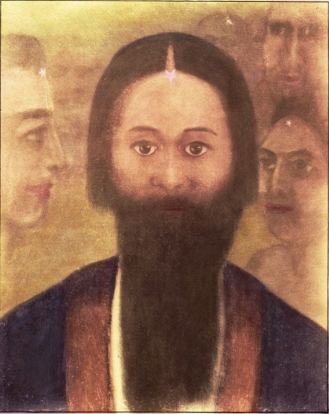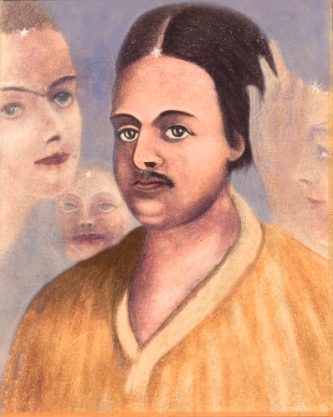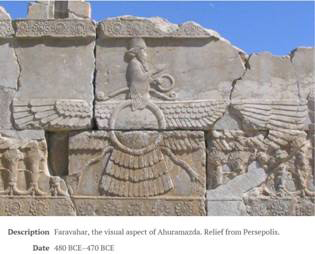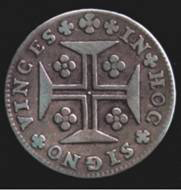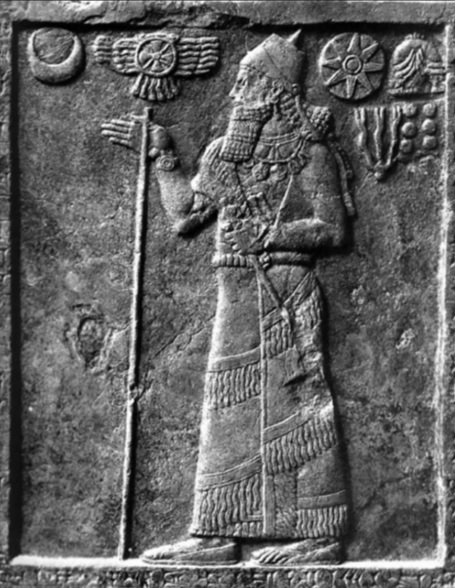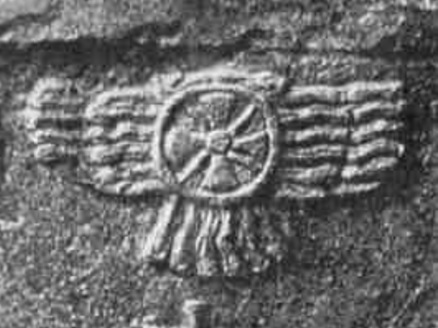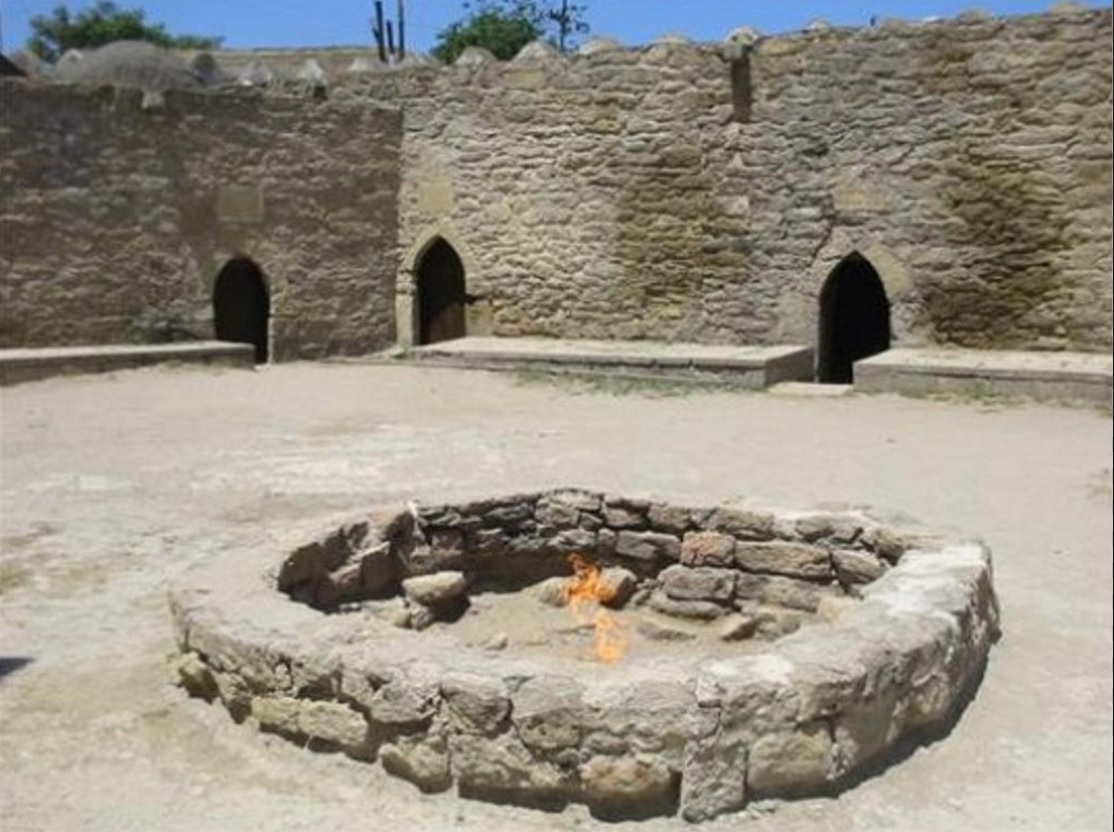Oahspe Study
The True Story of Abraham Part 2
Abraham,
Father of Nations ~ The true story of Abraham continues. Having
examined numerous historical and archaeological contexts that support the existence
of Abraham, particularly in accord with Oahspe's revealed information, we go on
to look at the religion of Abraham. Descended from a line of Faithists in
the Great Spirit, going back some 3,000 years to the original Zarathustrians,
Abraham restores the scattered Faithists of Western Par'si'e and Ham into
communal living, with rites and ceremonies as well as a common language that
incorporates higher concepts suitable for their spiritual development.
The Religion of Abraham
The Ezra bible dates Abraham at 2,000 bce and places Abraham's origins in the city of Ur of the Kasdim/Chaldees from a family of idol worshipers. But Oahspe dates Abraham at 4,000 bce and places Abraham's childhood and youth among the Zarathustrians in He-sa and Es-seth in Syria, Northwestern Mesopotamia. This location was in the western region of Par'si'e (which itself extended west to east in a wide strip east from Turkey across Syria, crossing the borders of the later Ancient Persia and eastward through and including Afghanistan and bordering Ancient India. Abraham entered the regions of Arabin'ya (specifically Canaan) from Syria and North Mesopotamia, leading more than 4,000 Faithists, descendents of the original Zarathustrians. Evidently these were the tribes of Iz.
Far from being the offspring of idol-worshippers, Abraham and his followers inherited their faith from the people among whom they were born - the original Zarathustrians of the Fragapatti cycle 9,000 to 6,000 years ago. It appears that in his country of origin, most of Abram's kind (including Abram in his youth) were enslaved by numerous kings within the region. Since the code of the Zarathustrian religion was to not war nor kill, petty tyrants took advantage to force these gentle industrious folk into slavery. What made Abram stand out from those around him was his ability to comprehend, hear and see spiritual realities of high grade; in other words, Abram was a seer of the highest caliber.
|
|
First Book of God; 24/8.7-8. Abram was of pure blood, and an I'huan; and the light of su'is had been with his forefathers and foremothers since the flood, and he was large and red, like new copper, and had black hair and long beard, fierce to look upon; but his soul was gentle as a woman's. Abram could see without eyes and hear without ears, knowing things by the light of God which dwelt in him. For which reason, God chose Abram to gather together the Faithists in Arabin'ya and the adjacent countries, even as he had appointed Po in Jaffeth.
|
Zarathustra
Abraham's religion was already ancient long before his time; moreover, from Oahspe we understand that the Zarathustrian religion came from the universal religion of the higher realms that permeate the whole universe. It was brought to the earth with the first Ethereans and carried forward through man's early history by their closest corporeal descendents, the sacred little people, the I'hins. Those other than the I'hins, i.e., the Listian / Ghan / I'huans, were only ready to receive that religion in the cycle of Fragapatti around 9,000 years ago.
Thus it is revealed that the word of God came to man through Zarathustra many thousands of years before the traditionally accepted dates set forth by later Zoroastrians, and the revised scholarly dates based on scripts (incorrectly) attributed to him.
|
|
Book of God's Word is about the first descent of God to the earth to establish his word with man. Through Zarathustra, a man of Par'si'e, God came for that purpose, eight thousand nine hundred years before the Kosmon era. God's Word is an important book, because it is the father and mother of all other religions in the world. The best historical accounts place Zoroaster [Zoraaster, Zarathustra] about six thousand years before Moses' time. That the Persians and Indians [Hindus] were far advanced in learning in those days, we have the proof that the stars and planets were then named and mapped. As much of the astronomy of that period is blended with our astronomy of today, so is the Zoroastrian [Zarathustrian] religion the framework and foundation of modern Buddhism and Christianity. The student will find that a thorough knowledge of the sacred books of the Chinese, Hindoos [Hindus], Persians, etc., will facilitate the classification of names here used. I'hua'Mazda, is synonymous with God; Mazda, [Ormazd] synonymous with Jehovih. 1882 Oahspe Editor
|
Dating Zarathustra aka Zoroaster
The date of Zoroaster, i.e., the date of composition of the Old Avestan gathas, is unknown. Dates proposed in scholarly literature diverge widely, between the 18th and the 6th centuries BCE.
Older scholarship...placed Zarathushtra as living in western Iran anywhere between 625 and 550 BCE, simply using the chronology maintained by the Parsi community in India or found in very late Zoroastrian sources, composed long after the period of revelation itself, ignoring the textual evidence from the Gathas, the oldest part of the Avesta, as well as its content. These deal heavily with the concerns of a pastoral steppe people living at a time when Bronze Age developments were adversely affecting their way of life. Recalling this context places Zarathushtra properly into the religious dispute seen in both the Avesta and the Rig Veda, which led to a decisive split between the Aryan-Vedic peoples of northern India and the Aryan-Avestan peoples of Iran.
Classical writers such as Plutarch and Diogenes proposed dates prior to 600 BCE [c. 6350 BCE]. Until the late 17th century, Zoroaster was generally dated to about the 6th century BCE).... However, already at the time (late 19th century), the issue was far from settled.
The "Traditional date" originates in the period immediately following Alexander the Great's conquest of the Achaemenid Empire in 330 BCE. The Seleucid kings who gained power following Alexander's death instituted an "Age of Alexander" as the new calendrical epoch. This did not appeal to the Zoroastrian priesthood who then attempted to establish an "Age of Zoroaster". To do so, they needed to establish when Zoroaster had lived, which they accomplished by counting back the length of successive generations until they concluded that Zoroaster must have lived "258 years before Alexander"....
By the late 19th century, scholars....noted problems with the "Traditional date", namely in the linguistic difficulties that it presented. The Old Avestan language of the Gathas (which are attributed to the founder himself) is still very close to the Sanskrit of the Rigveda. Therefore, it seemed implausible that the Gathas and Rigveda could be more than a few centuries apart, suggesting a date for the oldest surviving portions of the Avesta of roughly the 2nd millennium BCE. A date of 11th or 10th century BCE is sometimes considered among Iranists, who in recent decades found that the social customs described in the Gathas roughly coincide with what is known of other pre-historical peoples of that period. The Gathas describe a society of bipartite (priests and herdsmen/farmers) nomadic pastoralists with tribal structures organized at most as small kingdoms. This contrasts sharply with the view of Zoroaster having lived in an empire, at which time society is attested to have had a tripartite structure (nobility/soldiers, priests, and farmers). Although a slightly earlier date (by a century or two) has been proposed on the grounds that the texts do not reflect the migration onto the Iranian Plateau, it is also possible that Zoroaster lived in one of the rural societies that remained in Central Asia...|| wikipedia
Although modern scholars believe the Avesta and the Rig Veda were written in the same language period, Oahspe shows that they were thousands of years apart. The Rig Veda being the inspirations of the false Yima c. 3,000 bce, and the Avesta and its sibling texts came much later from Kabalactes c.766 bce. Modern scholars have not yet worked out that the Zend Avestas were a lame rehash of earlier sacred texts which had long been corrupted from the original Zarathustrian bible and religion. Such scholars latch onto similarities in language and earlier historical references in the Avestas as proofs that they were written in the same timeframe as the Rig Veda. In any case even the earliest dates of any of these writings will not reveal the presence of Zarathustra, since none of these arise directly from the original writings of Zarathustra. But it seems the original Zarathustra had not been completely lost sight of among the ancients, for despite various revisions of Zarathustra's life to a much later date, ancient Greeks such as Aristotle, Plato and Eudoxus dated Zarathustra at around 6350 bce --- now that is pretty close to the date given in Oahspe, but still short some 700 years.
Zarathustrian, Jewish and Zoroastrian Religions
While there are various elements of the original Zarathustrian religion within modern Zoroastrianism, the religion of Abraham shared only those elements that belonged to the original unadulterated Zarathustrian religion as it stood in his time. Even so, there are certainly aspects of modern Zoroastrianism in the Jewish religion (which also strayed from the original religion of Abraham). Although some of these commonalities may well date back to Abraham's time (and restored through Moses), many parallels probably exist due to influences upon the Jewish Faith during the Babylonian captivity and the following restoration to Jerusalem by the Zoroastrian Kings, Cyrus and Artaxerxes, circa 500 bce. The fact that the compiler of the Jewish bible, Ezra, was under orders of the Zoroastrian King, most likely also had some influence upon the outcome of the Ezra bible.
Most scholars cite monotheism as a common link among so called "Abrahamic religions". But such a classification has multiple faults. For instance, a religion may worship only one god, but that god may not be the same god as another "monotheistic" religion. Moreover, religious doctrines vary depending on how far they may have strayed from the original Zarathustrian religion. In point of fact, while the name of the All Highest may have been revealed as Jehovah, all those who claimed this name did not worship the All Highest. In the Ezra bible we encounter "Jehovah" or his representatives commanding death, sacrifice and war --- such commandments contravene the sacred Ten Commandments recorded and retained even in as corrupted a script as the Ezra bible. Thus it becomes clear that despite claims to names and professed pretensions, the nature of the one who is worshiped is written upon the character, behavior and fruits of such a one's devotees. For which reason, it becomes obvious that the ancient Mosaic religion (as passed down orally through the line of prophets and later exemplified in the Essenes and Joshu See Who was Jesus) was not identical to that of the apostates who adopted the bloodthirsty Canaanite Gods, and later the triune god, Looeamong (who later became the false Christ). The history of which can be read in the Book of Eskra in Oahspe.
Book of the Arc of Bon; 27/20.6 - 13.
|| I will put away all idolatry from the face of the earth.
Neither will I have kings nor queens; I am sufficient for all men.
As Abraham apportioned My people into families [communities –Ed.], with rab'bahs and with chief rab'bahs, so shall you re‑establish them.
And My commandments, which I gave to Abraham, I will give to you; and I will re‑establish My crescent with My rab'bahs. And My crescent shall be the fullness of My law for the rab'bahs and chief rab'bahs.
Moses said: I cried to Jehovih, saying: How shall it be with the square and at high noon? And the angel of Jehovih, speaking in the Father's name, said: To the northeast God; to the southwest Lord; to the northwest Baal; to the southeast Ashtaroth. For Osiris is dead already.
To this end, then, prepare a place for tonight, so that the Great Spirit may bless us. The rab'bahs and the Heads said: It is well.
And when it was night Moses with the rab'bahs and the Heads went aside, placing sentinels so they would be alone. And when they were thus prepared, the light of Jehovih came upon Moses, and the books of the ancients were opened before him. And he administered Emethachavah upon them; by the voice of Jehovih he re‑established it; with all the rites and ceremonies as they are to this day. And after that the Heads were no longer called Heads, but Chief Rab'bahs; for Moses anointed them by command of Jehovih.
And in not many days, Moses wrote the Levitican laws; for the inner temple of Jehovih was in spoken words only; but the outer temple was written. So that it was said: The Hebrews have two laws; one which no other man knows, and one for those who are not eligible by faith, being those who were called Leviticans; but not Leviticans in fact, but hangers‑on, who had followed the Israelites out of Egupt and who for the most part had no God, little judgment and no learning. ||
The Jewish religion of today is generally believed to be that which came from Abraham and then Moses, however, it is far from it in many ways, and yet Judaism still retains significant elements of it (differences can be studied more fully in the Oahspe text). It is also generally believed that Abraham was the first to establish Monotheism (belief in one God only), however, neither the ancient Hebrew nor ancient Zarathustrian religions were true monotheistic religions but rather more like Monistic Monotheisms. Other sources more accurately cite modern Zoroastrianism to be a form of Panentheism (not Pantheism):
|| Panentheism (meaning "all-in-God", from the Ancient Greek), also known as Monistic Monotheism, is a belief system which posits that the divine --- whether as a single God, number of gods, or other form of "cosmic animating force" -- interpenetrates every part of the universe and extends, timelessly (and, presumably, spacelessly) beyond it. Unlike pantheism, which holds that the divine and the universe are identical, panentheism maintains a distinction between the divine and non-divine and the significance of both.
In pantheism, the universe and everything included in it is equal to the Divine, but in panentheism, the universe and the divine are not ontologically equivalent. God is viewed as the soul of the universe, the universal spirit present everywhere, in everything and everyone, at all times. Some versions suggest that the universe is nothing more than the manifest part of God. In some forms of panentheism, the cosmos exists within God, who in turn "transcends", "pervades" or is "in" the cosmos. While pantheism asserts that 'All is God', panentheism goes further to claim that God is greater than the universe. In addition, some forms indicate that the universe is contained within God... ||
When scholars attempt to define monotheism as belief in the existence of one god only, rather than worship of one God only, it is then that monotheism fails as a category. For neither the ancient Hebrew, Jewish nor Zoroastrianism deny the existence of evil or false gods or demons. Perhaps the only religion that might fit monotheism is the youngest of the "Abrahamic" religions i.e., Islam. And although Christianity is considered an Abrahamic religion it is neither Panentheistic nor monotheistic. Despite its attempts to conjure its "trinity" into a unified deity, Christianity could not change the fact that it was worshiping a man-god / father-son / savior-ghost trinity. Thus its form is closer to the idol worshiping pagan religions that existed long before Christianity became the official religion of the Roman Empire, absorbing many elements of those same pagan religions it outlawed. (See The Origins of Christ)
Even so, such limited and crude definitions remain inadequate for understanding the true nature of the Zarathustrian religion, or its resurgence and restoration in its various shades and colors among the different groups of Faithists even to this day. The Oahspe illuminates a unique understanding of the Faithist religion (and its counterpart in Guatama) of which the Zarathustrian was one strand. These were the Faithists in the Great Spirit --- worshipers of the Great Spirit who worshiped none born of woman --- they understood the difference between man, god and Creator. This grade of religion required the ability to comprehend higher spiritual realities; it most decidedly was not merely a matter of conversion or co-ercion into a man-made religion.
Symbols of the Zarathustrian, Jewish and Zoroastrian Religions
Of the symbols that represented the All One the most significant among Zarathustrian Faithists were the sun and the flame, for they were direct manifestations of light. By the time of Abraham, the name for the All One among the Par'si'e Zarathustrians was Ormazd. In the language of the time, the name for light was "Or" (the phoneme goes back to the ancient panic language (See The First Language); the sound corresponds with the sound of a burning fire which is also symbolized as the flame). Thus one of the Zarathustrian names for the Creator was Ormazd meaning Master of All Light.
||...this ancient word for the Creator [Ormazd] refers to the light of spirit, mind, and intelligent thought, not the material light of the universe, which is secondary, a material creation arising from the Light of the Creator....|| From The Lost Data of the Chariots of the Elohim by Martha H. Jones
The Sun symbol as a disc, with and without wings, was common to the ancient Sumerians, Egyptians and Zoroastrians of ancient Persia. The corporeal sun was originally a symbol of the Highest Spiritual Light among the Faithists, and remained so with the Faithists of Abraham and later Moses. The sun symbol was not to be overtly displayed except at special times, lest it be mistaken as sun-worship. But the sun itself had became worshipful among the corrupted religions during the dark periods of the cycles of Fragapatti, Speta and Bon.
|
|
|
|
Anthropomorphic additions to the sun disc and wings symbol as seen (above left) in the Fravashi of modern Zoroastrianism dates back at least to the time of the Persian kings Cyrus and Archimedes from circa 700 bce. This addition of the bust of man to the ancient symbol has various meanings attributed to it, but the original meanings can be found in the context in which it appeared --- when kings were claiming divine right to rule, and a trend among apostates to represent god in the image of a man. We see a similar metamorphosis in Christianity of the original cross Constantine adopted on his battle standards (above right) and the later addition of a man to the elongated cross as a crucified savior.
|
|
|
|
|
|
Banquet Stele dating back to the reign of Ashurnasirpal II 883 to 859 bce Symbols of the sun, moon, stars, and crown are appropriated in this and other similar relief carvings in the ruined palaace of Ashurnasirpal symbolizing his sovereignty and power, later the bust of the man was added to the winged disk to more closely associate the king with divinity. |
While the winged disc of the sun is well known in Zoroastrian and Assyrian religions, it might be a surprise to find it in the Ezra bible:
"But unto you that fear of my name [YHWH] shall the Sun of righteousness arise with healing in his wings." Mal. 4:2.
The Old Testament mentions of the winged sun symbol in the above verse. This symbol shows up early in the ancient Middle Eastern culture but is mostly identified with the Egyptians. In speaking of one such depiction of a winged disk from the Louvre Museum...David Rohl says "You might be forgiven for thinking that this is an Egyptian winged sun-disc, however you would be wrong. It comes from the palace of Darius I at Susa. The Persians, Arartians, Hittites and Mesopotamians all employed this striking motif to represent their sky-gods. The winged sun-disc was not an original invention of the Egyptians."
There were many Middle Eastern peoples whose understanding of the light of the Creator had deteriorated into the worship of Shamasha variation of Chemosh, the sun or sun god. But the above bible verse seems to indicate that while the Israelites were aware of the flight of the "winged" disk, this symbol was seen as something that appeared to them as a sign, in recognition of righteousness and healthy living. However, in ancient Babylon a stylized wheel cross or solar cross, also symbolized the sun god Shamash....|| From The Lost Data of the Chariots of the Elohim; Martha H. Jones
The Flame on the other hand, also a symbol of modern Zoroastrianism, remained ever present among the ancient Israelites enduring as a holy symbol that suited the humble altars and tents that Abraham and his descendents inhabited. The flame is also found in India's religions, and since Abraham was of the ancient line of Shem(ite) Faithists (Ancient India was known as Shem) it is no surprise that these religions share symbols of their common origin.
|
|
The Zoroastrian Ateshgah "Fire Temple" near Baku, Azerbaijan. The temple was built over natural burning vents which no longer provide gas, and so the flame is now artificially fed via a pipe. Credit: Guisepe Etiope
|
It should not be a surprise then to find ancient names of places in the region from whence Abraham came beginning with "Or" as in Ur, Hor (ites), Nahor. Etymologically, Hor, har, hur all relate to "burning" which in turn harks back to the "flame" and "Light" of the ancient Zarathustrians. According to M. H. Jones, the Ur of the Chaldee was not a reference to the later Uruk city of Ur in South Mesopotamia, but of any number of place names that were called Ur or Or which existed at the time of Abraham in 4,000 bce.
|| Abraham near the end of his life tells his servant [Ezra bible text] to "go to your country, and to my kindred and take a wife unto my son Isaac...and he arose and went to Aram-Naharaim (Mesopotamia), unto the city of Nahor. (Which later probably became the kingdom of Mianni.) Nahor was in the Balikh valley of Northern Mesopotamia, so the Ur, i.e., city of the Chaldee which is mentioned [in the Ezra bible] is located in the northern land where the followers of Zarathustra were known to have lived. (Note also the similarity of the name Ur to the many other place names incorporating Or / Hor / Ur / Aur meaning "light" as in Ormazd). Harran was located in present day Turkey along a tributary of the Euphrates River. After Abram's family left it says, "they came unto Harran" if he had come from Ur in southern Mesopotamia, why would he go to northern Mesopotamia on a journey to Canaan? Where was Abraham's Ur?
Mitanni nobility, known as Marya, were an Indo-Aryan warrior caste, referred to in the [Ezra] Bible as Horites (Genesis 14:6), the HOrites worshipped the Indian Mitra / Mithra, who they called "the mediator", between Hormazes (Ormazd) and (Ahriman) the spirit of evil. That the Horites were already in existence at the time of Abram and Lot also demonstrates the presence of the teachings of Zarathustra as predating Abraham, because the Horites followed a degenerated form of Zarathustra's teachings concerning Ormazd. These Horites followed some form of Mithraism, which had fallen away from the peaceful, loving vegetarian approach Zarathustra taught and actually advocated. [Horites instead were] observing a sacrificial meal as some kind of worship advocated by Mithra.....This means that Abraham before coming from Ur of the Chaldee / Kasdim [Nahor], had earlier left behind family among the Mitanni Horites, but Abraham's family were still under the protection of HVH's Elohim of the Shem, worshipers of the Light of YHVH, but by the archaic name Hor (as in Hor-mazd) || From The Lost Data of the Chariots of the Elohim by Martha H. Jones:
Man after Zarathustra and before Abraham
Man would grow spiritually in the 3000 years from the time of Zarathustra to Abraham. In Zarathustra's time, for the most part the population of man consisted mainly of Faithists and those who did not believe in spirit; and a wide gap existed between the two groups. But by the time of Abram, man now ranged in a continuum that spanned from non-believers to believers in spirit and then to believers in the Great Spirit, although a sizable chunk of humanity consisted of at least believers in spirit.
The initial impetus for that change across the millennia came because, as Oahspe says, after being converted, the Sun-King (king of all the kings of Asia and Arabin'ya) ordered the Zarathustrian religion to be enforced by all kings in his empire, even though, according to the Zarathustrian law it was forbidden to enforce the religion. Such peoples, having an imperfect understanding of the teachings of Zarathustra, would for the most part ultimately distort much of the teachings and apply them to self-serving ends including warfare and destruction of the true Faithists.
These true Faithists on the other hand lived by the code of the Emethachavah [roughly, Order of the Faithists]; and having signs, counter-signs and passwords, could recognize each other wherever they went. Ultimately they were persecuted and scattered, and lost some of the teachings in the process. So that by the time of Abraham, between loss of religious specifics and distortions of them, man for the most part was ready for a clearer perspective of reality.
The kings of Abram's youth, for their part, believed that such a clarity of perspective could best come about through three things, written records, Ae'jins to give counsel from the spirit world, and security achieved by a strong kingdom able to war, if necessary. Indeed, Oahspe says of the many wars between kings of those times that the libraries, oracle temples and their Aejins were never harmed.
But those of the True Faithists' lineage recognized in Abraham that clarity of perspective. Because of his great capabilities, Abraham was able to coalesce the languages of the various Faithists that flocked to him. The clarity he brought to his listeners' understanding, allowed them in turn to repeat it to others so that in time the language used became known as the Abram language, that is, it was spoken in the language used by Abraham. This language in time came to be incorporated into the language of diplomacy between kings, and its written version became known as Fonece; but some of the common folk, especially those called Listians also incorporated Abram into their language, the result of which became known as Araba.
Following on the tide Abraham's teachings, the Ae'jins in the temples began to give forth messages of peace from the spirit realm, instead of war advice as before. And kings were always ready to obey the oracles; so, peace came to the lands. And man thirsted for knowledge. Because much of humanity followed some form of Zarathustrian teachings (as diluted as many teachings may have become) they began to desire spiritual knowledge, and among them were various degrees of Faithists-in-heart and Faithist apostates.
The Golden Age of Faithism in the Spe-ta Cycle
We know from Oahspe that by the end of Fragapatti's cycle, when Abraham was born, the Zarathustrians were enslaved by a lower grade of mankind whose strongest most aggressive men rose to be kings. They practiced extreme savagery that included widespread cannibalism and enslavement of the non-resistant Zarathustrians. Thus Abraham, destined to become the rabbah / Spiritual father of the Par'si'ean Zarathustrians (The tribes of Iz) as well as the Faithists of Ham (The tribes of Zerl), fulfilled his role as he gathered and established the scattered Zarathustrians of those regions into purity of religion and unity of family and community.
As it was later with Moses, many who were either not of the Zarathustrian religion, or apostates of it, were also drawn to follow Abraham. These did not fulfill the Zarathustrian laws but nevertheless lived beside the Faithists and consequently many were uplifted by their example and proximity. Abraham's religion was such that only those who were capable of sufficient spiritual insight could understand it with any depth. And so levels or degrees of Faithism became established for seekers either ineligible or unwilling to enter Faithist communities. These societies continued to uplift the people over the following hundreds of years often in the guise of guilds, instructional colleges, business collectives, etc.
These levels or degrees of Faithism were called the Anubi Rites. They were given in secret and were kept secret, except for the first degree. These rites became the basis for nearly all later secret societies, and remnants of the first degree ceremony survived even into our day. The degrees of Anubi taught not only basic and advanced instruction in spiritual matters, but also in the higher degrees imparted what today we would call science and engineering.
The Anubi rites were not the same, however, as the secret rites of the Emethachavah. But the people who adhered to the Anubian rites became known as Me-de-ans, and if and where they lived together, that place of domicile was called Me-de-a (which was the origin of those words and out of which would come the words median and medium).
Out of this culture came the full flowering of the Abrahamic language which served to lift the nations to reach spiritual and intellectual heights that became possible in the light that continued for at least some three hundred years.
What man learned over the course of those years was that if the highest could not be attained, then at least a lower height could be attained and sustained. This became known as the Me-de-an principle, being the origin of what later would be called the way of the middle path and the Golden Mean. Eventually the Anubi rites got driven underground in Asian nations, but in Egypt and surrounding regions they continued, though in a corrupted form; yet for the ceremony of the first degree, much of the gist remained.
Ultimately it came to pass that man fell from his high estate and the kings began to war. And while the pure (i.e., fully practicing) Faithists were non-resistants i.e., would not war, some of the Me-de-ans would fight, although as a general rule, only as a defensive measure. For these Me-de-ans would say, "Better we should fight and suffer some loss, than to lose it all without resisting."
Ormazd (Master of Light), synonymous with Great Spirit
The meaning of Ormazd as Master of Light and Creator of all, as revealed by Zarathustra's teachings, continued into modern times, as well as a variety of other names. But from time to time the name and perceptions associated with the Master of Light, became fodder for aberrant teachings in the hands of those seeking self-serving ends. And at other times higher, more nuanced perceptions regarding Ormazd were lost simply because of dark times that mortals would occasionally endure.
Zarathustrians were also gathered by Abraham's contemporaries in the Eastern Hemisphere, being equivalent in stature, there was Po of China (then called Jaffeth) and Brahma of India. Followers of both Po and Brahma continued to teach and use the name Ormazd. Through Brahma was taught what was known as the Vedas (not to be confused with the later Vedas which were degraded and distorted versions of the original). And Brahma's followers were sometimes called Brahmans and sometimes Vedans. Similarly through Po were also named the servants of Ormazd and these were called Te-in and included not only mortals but the highest of angels. In after times, the words Brahma and Te-in along with other names (such as Ahura'Mazda) became conflated with Ormazd --- although, the true Faithist followers did not worship either Te-in nor Brahma. (While Brahma was not worshipped by the Faithist followers, he is not to be confused with the much later (false) Brahma who created a distorted religion.)
What man sought from Abraham, Brahma and Po to Moses, Capilya and Chine was light of understanding from a variety of perspectives so as to arrive at a balanced philosophy between the physical realm and the spiritual realm. To do this required light; hence the looking to Ormazd - Master of Light (or one of the replacement names).
Closer to our time, Moses and his similarly statured contemporaries, Capilya of India and Chine of China (named after Chine), reinvigorated and made more comprehensive the teachings of the Great Spirit. Since Abraham's time these had taken root and flourished among the Faithists as a Tree of Light.
Following hundreds of years of light in which the teachings of Moses and his contemporaries were exampled in the communities of Faithists they had established, there again came dark times and man again sought light. But now the search was for the light of knowledge. For, having previously experienced many perspectives, man would begin to seek the One knowledge that would explain it all. And so in Arabin'ya, India and China and their nearby regions, three names signifying Knowledge arose. In the Arabin'ya region the name was some variation of pronunciation of the Chi-Rho, that is KR meaning knowledge, which in the Ahamic (Aramaic) language was called KRiste. In India and its surrounding region the word signifying Knowledge was Budah. In China and surrounding region the word was Brahma. Later would arise Mohammed who taught of Allah; and as we shall show, here also was a connection with Knowledge.
Having shown the relationship of the modern major religions to that taught by Zarathustra we shall explore further the roots of modern religion as they pertain to Ormazd, the Master of Light in Part 3.
All Oahspe references are from the Standard Edition Oahspe of 2007
●
GO TO NEXT
ARTICLE:
The True Story of Abraham Part 3
